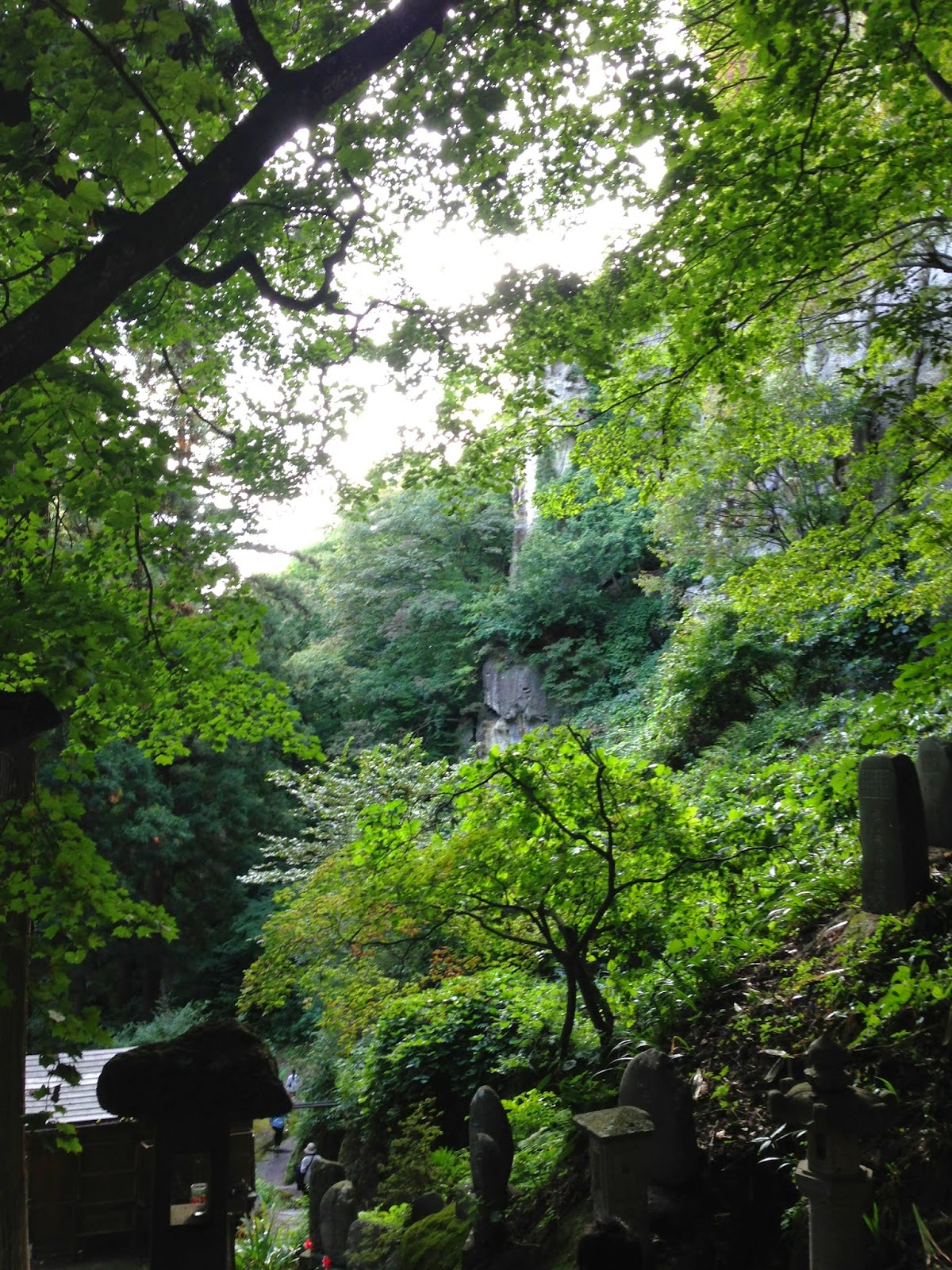Yamadera (山寺), meaning mountain temple, is built in the mountains of Yamagata Prefeture. It was founded in 860 as a temple of the Tendai Buddhist sect. It is a great place for a short hike and for some great views. In most guide books I have seen, Yamadera is mentioned as a good side trip from places like Sendai, although you would have to travel a little ways to get there.
At the base of the mountain, you can find several temple buildings. The oldest building here houses a flame which is said to have been burning since Yamadera was founded. There are also some small shops for food, water and other things! I managed to buy a shrine book with a lovely picture of Yamadera on it (unfortunately, I didn't actually use it because I was yet to fill my other book with stamps!).
To get up the mountain, you will need to climb around 1000 steps, which can be a bit of a hike. You can see stone lanterns and small statues as you ascend. Needless to say, I was exhausted as I got to the top!
There are many buildings scattered near the top, and I could see other areas, such as a balcony-like seat in the rock face. Unfortunately, my bus going there arrived late, so I didn't have time to have a good look around. Added to my rushed hike (run?) up the mountainside, I really didn't have a good opportunity to take it all in anyway!
From the upper areas, there is a great view of the surrounding valley. Luckily, the weather was good when I visited, so it looked great!
Yamadera is also famous for one of the places visited by the poet Basho. He wrote one of his well-known haikus here in 1689, which mentions the stillness and quietness of Yamadera. Here is an English translation:
"ah this silence / sinking into the rocks / voice of cicada"
Although my time there was short, I did enjoy being able to visit Yamadera. It was a place I had been wanting to visit since living in Sendai. If I am able to visit the region again, I would love to spend some more time here to leisurely take in the atmosphere. But, I'm not sure if I'll be thrilled about climbing up again!
At the base of the mountain, you can find several temple buildings. The oldest building here houses a flame which is said to have been burning since Yamadera was founded. There are also some small shops for food, water and other things! I managed to buy a shrine book with a lovely picture of Yamadera on it (unfortunately, I didn't actually use it because I was yet to fill my other book with stamps!).
 |
| In the upper area. |
 |
| Climbing up. |
To get up the mountain, you will need to climb around 1000 steps, which can be a bit of a hike. You can see stone lanterns and small statues as you ascend. Needless to say, I was exhausted as I got to the top!
There are many buildings scattered near the top, and I could see other areas, such as a balcony-like seat in the rock face. Unfortunately, my bus going there arrived late, so I didn't have time to have a good look around. Added to my rushed hike (run?) up the mountainside, I really didn't have a good opportunity to take it all in anyway!
 |
| View of the valley. |
Yamadera is also famous for one of the places visited by the poet Basho. He wrote one of his well-known haikus here in 1689, which mentions the stillness and quietness of Yamadera. Here is an English translation:
"ah this silence / sinking into the rocks / voice of cicada"
Although my time there was short, I did enjoy being able to visit Yamadera. It was a place I had been wanting to visit since living in Sendai. If I am able to visit the region again, I would love to spend some more time here to leisurely take in the atmosphere. But, I'm not sure if I'll be thrilled about climbing up again!



















































